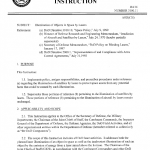
Implements policy, assigns responsibilities, and prescribes procedures under reference (a) regarding the illumination of satellites by lasers to protect space assets from any potential harm that could be caused by such illumination.
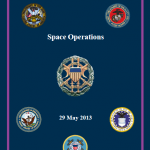
This publication provides guidance for planning, executing, and assessing joint space operations. It provides space doctrine fundamentals for all joint forces; describes the military operational principles associated with support from, through, and operating in space; explains Joint Staff, combatant command (CCMD), United States Strategic Command (USSTRATCOM), and USSTRATCOM functional and Service component relationships and responsibilities; and establishes a framework for the employment of space forces and space capabilities.

Within DHS, this overarching responsibility for critical infrastructure protection is delegated to the National Protection and Programs Directorate’s (NPPD) Office of Infrastructure Protection (IP), specifically the Sector-Specific Agency Executive Management Office (SSA EMO) CF Branch for commercial facilities. Serving as the Sector-Specific Agency (SSA) for the CF Sector, the CF Branch works with its partners to address and highlight low-cost preparedness and risk management options in the products and tools it makes available to the private sector. For example, the CF SSA has been working to produce a suite of protective measures guides that provide an overview of best practices and protective measures designed to assist owners and operators in planning and managing security at their facilities or events. The Protective Measures Guide for the U.S. Outdoor Venues Industry is one of these guides and reflects the special considerations and challenges posed by the Outdoor Venues Subsector.
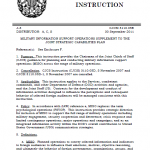
In accordance with (IAW) reference a, MISO replaces the term psychological operations (PSYOP). This instruction provides strategic direction for inclusion of MISO to support the full range of military operations including military engagement, security cooperation and deterrence; crisis response and limited contingency operations; major operations and campaigns; and as an integrated information activity within the DOD’s overall contribution to United States Government (USG) communication strategies.
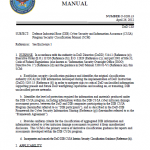
DIB CS/IA is the DoD program to protect critical DoD unclassified program, technology, and operational information residing on, or transiting, DIB unclassified networks. DoD Components and industry participants collaborate to protect DoD information through the development, implementation, and execution of DoD and DIB processes and procedures.
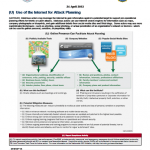
Malicious actors may leverage the Internet to gain information against a potential target to support pre-operational planning efforts for kinetic or cyber attacks. Malicious actors can use Internet search engines for information such as maps, company photographs or blueprints, and gain additional details from social media sites and Web blogs. Some actors may use more sophisticated techniques—such as phishing, spear phishing, or actual penetration of an organization’s network or devices—which can be used to gather personal, sensitive, or proprietary data.
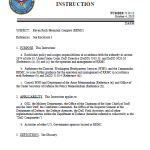
The mission of RRMC is to support the Secretary of Defense, the Chairman of the Joint Chiefs of Staff, select DoD Components and, as appropriate, non-DoD agencies of the Federal Government, and to enable the execution of DoD mission-essential functions (MEFs) in accordance with DoDD S-5100.44 and continuity of operations (COOP) plans and operational orders.
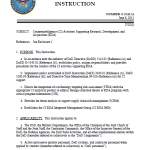
The CI mission in RDA informs the DoD Components and supporting CDCs of foreign collection threats and detects FIE targeting of defense-related technology. The CI support enables RDA program personnel to implement countermeasures and enables CI to develop activities that negate, counter, penetrate, or exploit an FIE.

Urban Shield is a continuous, 48-hour Full Scale Multi-Disciplinary Homeland Security/Disaster Preparedness Exercise hosted by the Alameda County Sheriff’s Office, with the support of the Bay Area Urban Area Security Initiative (UASI), and more than 150 local, state, federal, international and private sector partners.
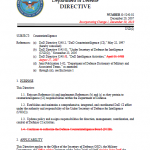
Defense CI activities shall be undertaken as part of an integrated DoD and national effort to detect, identify, assess, exploit, penetrate, degrade, and counter or neutralize intelligence collection efforts, other intelligence activities, sabotage, espionage, sedition, subversion, assassination, and terrorist activities directed against the Department of Defense, its personnel, information, materiel, facilities, and activities, or against U.S. national security.
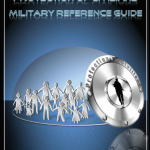
This PoC Military Reference Guide is intended to be a resource for military commanders and staffs who must consider PoC while conducting operations in PSO and MOAC contexts as shown below Other interested readers may include international organizations, national militaries, training centers, and civilian and police officials who are also concerned with PoC.
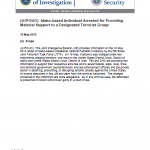
This Joint Intelligence Bulletin (JIB) provides information on the 16 May 2013 arrest of Idaho-based Uzbekistan national Fazliddin Kurbanov by the FBI Boise Joint Terrorism Task Force (JTTF). On 16 May, Kurbanov was charged under two indictments alleging terrorism, one each in the United States District Court, District of Idaho and United States District Court, District of Utah. FBI and DHS are providing this information to support their respective activities and to assist federal, state, local, tribal, and territorial government counterterrorism and law enforcement officials and the private sector in deterring, preventing, or disrupting terrorist attacks against the United States. All events described in this JIB are taken from the criminal indictment. The charges contained in the indictment are mere allegations. As in any criminal case, the defendant is presumed innocent until proven guilty in a court of law.
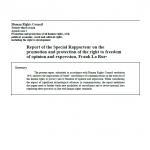
The present report analyses the implications of States’ surveillance of communications for the exercise of the human rights to privacy and to freedom of opinion and expression. While considering the impact of significant technological advances in communications, the report underlines the urgent need to further study new modalities of surveillance and to revise national laws regulating these practices in line with human rights standards.
The 2011 tax return for the Washington D.C.-based charity American Friends of Bilderberg.
The 61st Bilderberg meeting is set to take place from 6 until 9 June 2013 in Hertfordshire, UK. A total of around 140 participants from 21 European and North American countries have confirmed their attendance. As ever, a diverse group of political leaders and experts from industry, finance, academia and the media have been invited.
More than a dozen images originally published on the website Кавказская политика Kavkazskaya Politika (Politics of the Caucasus) after being displayed at a press conference held in Moscow by Ibragim Todashev’s father Abdul-Baki Todashev on May 30, 2013. Ibragim Todashev was shot seven times in his Orlando, Florida apartment on May 22, 2013 following eight hours of questioning by an FBI Special Agent from the Boston Field Office and at least one Massachusetts State Police trooper. Law enforcement sources have provided media outlets with several differing versions of the events leading up to Todashev’s death. First, sources described Todashev being shot after he reportedly attacked the FBI agent with a knife. In later accounts, Todashev was described as being unarmed. In the most recent version of events Todashev reportedly overturned a table, knocking the FBI agent to the ground, before lunging at the agent with a pole or broomstick.
A Provincial Reconstruction Team (PRT) is a civil-military organization, task-organized to a geographical province, whose purpose is to extend the reach and legitimacy of the Central Government of Afghanistan by developing a self-sustaining, peaceful, civil-society. It is a tactical organization with strategic impact. The ratio of military to other governmental, United Nations (UN), and non-governmental organizations depends heavily on the degree to which the area is pacified. The success of a PRT is measured by its ability to increase Central Government capacity and good governance as well as to, “Seize the human terrain and defeat the enemy.” One important element of this is to identify and mentor key Afghan personnel in democratic governance and leadership.